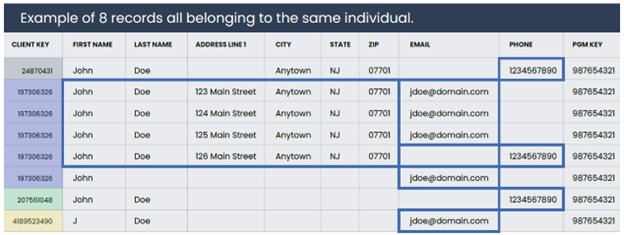Knowing how to harness the power of data is vital for staying competitive, innovative, and relevant in the marketplace. To leverage data intelligently, customer data integration (CDI) is an important strategy for businesses aiming to take advantage of data-driven intelligence.
What is Customer Data Integration?
Customer data integration involves the collection, cleaning, and analysis of data from various sources, such as CRM systems, social media, and transactional records to help brands achieve a holistic understanding of customer behaviors, preferences, and interactions.
It involves the collection, cleaning, and analysis of data from varied sources such as CRM systems, social media, transactional records, and more.
Additionally, a successful CDI strategy provides unified customer profiles, enabling companies to make more informed decisions and personalize customer interactions.
The Power of Leveraging Customer Data Integration for Data-Driven Personalization
Using customer data integration (CDI) for data-driven personalization involves leveraging integrated customer data to personalize interactions, messages, and services to individual customer preferences.
According to research by Adobe, 53% of marketers report loyalty as an outcome of personalization. Additionally, about half (49%) have experienced improvements in revenue, 43% have experienced retention, and 38%, more efficiency of marketing spend.
Using data-based insights to make better marketing decisions requires a comprehensive view of existing and incoming data. Nearly one-third (32%) of marketers surveyed in an Ascend2 report that a strategy is planned to have unified marketing data and 45% are already operating with a strategy in place (Ascend2, 2021).
- 87% of marketers say data is their company’s most under-utilized asset.
- 40% of brands plan to increase their data-driven marketing budgets.
- Businesses that use data-driven strategies drive five to eight times as much ROI as businesses that don’t.
Customer Data Integration Benefits
360-Degree Customer View
- Holistic Understanding: CDI allows businesses to create a comprehensive and unified view of each customer by integrating data from multiple channels and touchpoints.
- Improved Customer Insights: Having a complete view enables a better understanding of customer behaviors, preferences, and interactions, leading to more informed decision-making.
Enhanced Customer Experience
- Personalization: With accurate and integrated customer data, businesses can personalize interactions, offers, and services, resulting in a more tailored and satisfying customer experience.
- Timely and Relevant Communication: Businesses can use integrated data to send timely and relevant communications to customers, addressing their needs and preferences.
Improved Operational Efficiency
- Streamlined Processes: CDI helps streamline internal processes by providing a single, centralized source of truth for customer data. This reduces redundancies and errors associated with managing disparate data sets.
- Efficient Decision-Making: Access to accurate and up-to-date customer information facilitates quicker and more efficient decision-making across various departments.
Better Marketing and Sales Strategies
- Targeted Marketing: Integrated customer data enables more targeted and effective marketing campaigns by segmenting customers based on their behaviors, preferences, and demographics.
- Sales Enablement: Sales teams can benefit from a complete customer view, allowing them to tailor their approach, anticipate customer needs, and improve sales effectiveness.
Increased Customer Retention
- Proactive Customer Service: Integrated data allows businesses to provide proactive customer service by understanding customer needs and addressing issues before they become significant problems.
- Building Customer Loyalty: By delivering personalized and positive experiences, businesses can foster customer loyalty and increase retention rates.
Regulatory Compliance
- Data Accuracy and Compliance: CDI helps ensure that customer data is accurate and up-to-date, facilitating compliance with data protection regulations and avoiding potential legal issues associated with incorrect or outdated information.
Scalability and Adaptability
- Adaptation to Changing Business Needs: A well-implemented CDI system is scalable and adaptable, allowing businesses to evolve and accommodate changes in their processes and data sources.
8 Steps for Customer Data Integration
1. Set Clear Objectives
Setting clear objectives is the first step in developing a customer data integration strategy. Define what you intend to achieve through data integration, whether it’s improving customer service, personalizing marketing campaigns, or enhancing product development.
2. Identify Data Sources
Identify all the various sources of customer data within your organization, including CRM systems, social media channels, e-commerce platforms, customer service interactions, and more.
3. Establish Data Standards
Develop and enforce standards for data formats, structures, and quality across your organization to ensure consistency and reliability in the integrated data.
4. Ensure Data Quality
As part of a data integration initiative, be sure data is regularly cleaned, validated, deduped, and updated to maintain its accuracy, relevance, and consistency, as high-quality data is crucial for deriving meaningful insights.
Example of how multiple data sets can lead to multiple records on one contact, which need to be cleansed for accurate insights.

5. Prioritize Data Security and Compliance
Adhere strictly to data protection regulations and implement robust security measures to safeguard customer data and maintain customer trust.
6. Select Integration Tools and Platforms
Choose advanced integration tools and platforms that can effectively consolidate diverse data sources, formats, and structures.
Get to Know Your Customers and Deploy Personalized Journeys Across Channels
The Velocity marketing platform gathers customer insights across channels to create a comprehensive customer view. Get to know your customers like never before and deploy personalized customer journeys—wherever and whenever your customers prefer.
7. Analyze and Visualize Integrated Data
Leverage analytical tools to explore, analyze, and visualize integrated data, deriving actionable insights that can inform business strategies. (add some of the data visualization pics from the website? – https://porchgroupmedia.com/velocity-marketing-platform/)
8. Continuously Refine Integration Processes
Regularly review and refine your data integration processes and strategies to adapt to evolving business needs, technological advancements, and market changes.

Example: Customer Data Integration Use Case
An athletic apparel shop called “Run & Wear,” implements customer data integration to optimize product assortments, personalize marketing strategies, and improve the customer experience.
Set Clear Objectives
Run & Wear outlines objectives for the data integration process: to optimize the product portfolio based on customer preferences, enhance customer interaction across all touchpoints, and streamline supply chain and inventory management.
Identification of Data Sources
Run & Wear identifies several data sources:
- E-commerce website & mobile app analytics
- Point-of-sale (POS) system data from physical stores
- Social media interactions & feedback
- Customer reviews & feedback forms
- Email & SMS response data
- Loyalty program data
Data Consolidation & Integration
Run & Wear consolidates data from all identified sources, cleansing it by correcting inaccuracies and removing redundancies.
They leverage integration tools to synchronize the cleaned data, creating a single, unified database that offers a comprehensive view of each customer’s interactions and preferences.
Data Analysis & Activation
- Segmentation & Personalization: Analytical tools segment customers based on their buying behavior, preferences, and interaction history. The insights derived are then used to personalize marketing messages, promotions, and product recommendations.
- Customer Journey Enhancement: Based on unified customer views, Run & Wear refines every touchpoint of the customer journey, including website navigation, in-store experiences, and customer support interactions, aiming to maximize customer satisfaction and engagement.
- Inventory & Supply Chain Optimization: Integrated data helps in identifying the most popular products and sizes, allowing for a more data-driven approach to inventory management and supply chain optimization.
Continuous Improvement
Run & Wear regularly reviews the effectiveness of the strategies implemented based on integrated data insights and continually refines its approach to stay aligned with evolving customer needs and market trends.
Outcome
- Enhanced Customer Experience: Personalized interactions and optimized touchpoints lead to improved customer satisfaction and loyalty.
- Increased Sales: Tailored marketing and optimized product assortments, driven by customer preferences, lead to higher conversion rates and increased sales.
- Operational Efficiency: Data-driven inventory and supply chain adjustments reduce overstocks and stockouts, optimizing operational costs and efficiency.
Conclusion
Customer data integration can unlock significant value for organizations. By consolidating data from diverse sources, maintaining high data quality, ensuring data security, and leveraging advanced integration tools, you can gain a comprehensive view of your customers, optimize interactions, and drive business success.
Omnichannel Marketing Solutions
See for yourself how our omnichannel marketing tools and journey management platform can help you boost customer acquisition and curb attrition. Contact us today!




